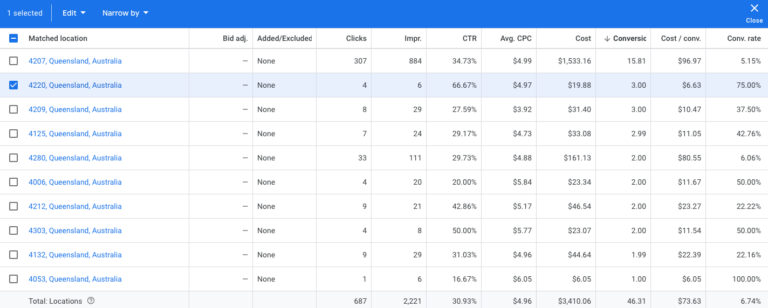And just as the constantly evolving world of internet marketing, there is one thing that will never be out of style i.e keyword research. Blogging, site optimization, building an internet...
8 Proven Ways To Improve Your PPC Campaign Performance
Everything you need to know about our Company Read MorePaid-per-click (PPC) advertising is an essential element of successful online marketing. Most of the time, when a team begins working on a PPC campaign or account, it is accompanied by a history.
It doesn’t matter if they acquired it or were required to conduct an audit; the goal is the same: to look at it with new eyes and use their experience and hard-earned knowledge.
This updated guide will focus on the most effective ways to increase a PPC campaign’s performance, considering the latest trends. By utilizing the most up-to-date tools and insights, teams can ensure that their campaigns are designed to maximize impact and ROI.
Key Areas For Improving PPC Campaign Performance

-
Performance By Location
A common but easy method to categorize performance by audience is to look at where prospective and existing customers are situated. There will likely be patterns for various states, regions, and postal codes. It’s obvious when one considers that demographics are completely different from one location to another.
When geographic data segment a target audience, it allows for customized marketing campaigns targeting certain regions more effectively.
For example, high transaction rates in suburbs with high incomes could justify spending more to attract those clients. Campaigns should be set up to reflect these specifics to maximize performance.
-
Performance By Device
It’s a fact despite the growing convergence of experiences across different platforms and devices, user behavior may differ significantly between devices.
While mobile dominates traffic, desktop often leads in conversions for various industries. It’s not just a question of screen size or resolution; it’s also about the contextual factors and the reasons behind why a device is chosen over another.
It is essential to regularly review device performance to gain a better understanding of users and the context within which they function. This helps tailor messages and user experiences accordingly. Additionally, aligning this information with other marketing channels could increase the efficacy of marketing campaigns.
-
Performance By Network
The right networks can dramatically impact the success of a campaign. There is much debate about the quality of clicks from partner websites. However, most times, they result in such a tiny amount of traffic that, in the larger context of an account, the cost can be insignificant.
Since there isn’t a way to focus solely on Search Partners, whether to keep Search Partners on or off is an entirely different issue.
However, this is not the case for the Display Network—Search and Display campaigns must always be separated. Even though the Search Network delivers high-intent traffic, the Display Network excels in branding.
Despite the impending end of third-party cookies, which means that personalization and specific ads will become more restricted, contextual advertisements will likely increase.
Display ads can disrupt the user experience even when highly targeted, so this must be considered in design and marketing. Furthermore, both networks can reach potential customers at different points in their user journey and employ various strategies and goals that align with this.
-
Audience Performance
In many cases, it is observed that search engines drive a large amount of traffic from existing customers who utilize engines to quickly “navigate” to a website to log into their accounts. If proper security measures are implemented, these navigational clicks could be affordable when derived from PPC advertisements.
Suppression lists should be created to prevent extra costs that won’t lead to additional conversions. In a previous article, it was noted that the third-party cookie ban restricts the ability to target certain audiences with tailored ads, including retargeting.
Other logical applications for targeted audiences include segmenting the first-party database into groups based on shared attributes or identifiers, which are subsequently determined by behavior (e.g., pages visited) or engagement levels (e.g., high material usage).
Given the increasing importance of first-party information due to privacy regulations, tracking the customer database is vital.
Audiences also serve as a good observation tool rather than focusing solely on the previous instance. As these will not affect campaign effectiveness, adding as many relevant individuals as possible is highly recommended. After data collection, it can provide additional insights into which audiences are most important and which segments are underperforming, allowing for necessary adjustments.
-
Negatives And Negative Lists
Keywords remain the most powerful signal. However, due to the complex nature of natural language and the distinct methods people use to search, even the most advanced machine learning algorithms may still need to grasp intent fully.
Therefore, it’s just as important as ever to limit the chances that keywords could appear in search results that don’t match desired outcomes. Continuous monitoring and analysis of available search query data are essential.
Despite today’s limitations, reports on search queries can help understand what Google considers a website or page about.
At a time when Google urges advertisers to switch to broad-match themes, this approach can reduce costs for unnecessary search terms that are less relevant and eliminate terms that aren’t aligned with campaign goals. This process continues to boost quality scores and the overall efficiency of campaigns.
-
Conversion Tracking
Accurate conversion tracking is the foundation of successful PPC campaigns. This is among the top priorities, as ensuring that the correct goals are being tracked is crucial. In the world of digital marketing, everything must be quantifiable, and marketers must be accountable for the effectiveness of their campaigns.
Conversion tracking must be the primary focus when making decisions and buying media. Instances of PPC campaigns and accounts often need proper conversion tracking or track the correct endpoints.
To ensure conversions are working and recording properly, professional tips include utilizing the segmentation option inside Google Ads to easily and quickly view an overview of conversion types by campaign (see an example below).
-
The Role of Automation And AI
The advent of AI and automation has significantly transformed the marketer’s role. It is now essential to ensure that efficiency is maximized with these technologies. Automated systems can extract and offer additional insights from vast data that manual methods cannot. Only by understanding and using these capabilities can marketers remain ahead.
-
First-Party Data and Privacy Regulations
The importance of this issue must be addressed; due to ever-increasing privacy regulations, third-party information is becoming less reliable. Therefore, preserving first-party data is more crucial than ever.
Maintaining extensive customer lists with complete transparency permits targeted advertising with greater precision and personalization while ensuring compliance with privacy laws and campaign effectiveness.
Key Takeaways for 2024
- Make data-driven decisions using the latest insights into performance.
- Regularly update and tweak strategies to remain ahead of the competition.
- Maximize the effectiveness of campaigns by utilizing all available tools and features.
- Adapt to the ever-changing role of AI and automation in PPC advertising.
- Maintain mindfulness regarding first-party data to overcome challenges created by privacy laws.





Leave a Reply